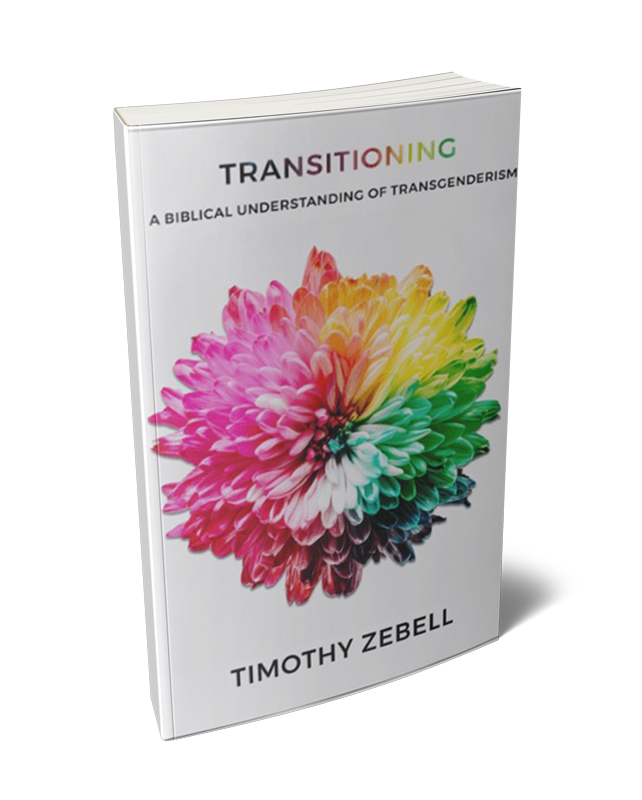“Trans women are killed for using the men’s restroom, and they’re jailed for using the women’s restroom. In the end, what choice do we have?” This comment by Tyler Beebe, a 27-year-old trans woman, is indicative of the kind of rhetoric that surrounds the debate over who can and cannot use gender-specific bathrooms.[1] Reality, however, is far more mundane than this sensational claim.
Aside from the fake news story claiming that a transgender woman was shot and killed in the bathroom of a Colorado department store in 2016, one is hard-pressed to find instances of transgender individuals being killed in bathrooms.[2] Instead, advocates for removing gender restrictions on public bathrooms often cite a study by the Williams Institute titled “Gendered Restrooms and Minority Stress: The Public Regulation of Gender and Its Impact on Transgender People’s Lives.” The study concludes, “Seventy percent of survey respondents reported being denied access, verbally harassed, or physically assaulted in public restrooms.”[3]
The spectrum for this study is colossal. For the purposes of this study, verbal harassment was “defined very broadly,” including, but not limited to, “having been told they were in the wrong facility,” “told to leave the facility,” “questioned about their gender,” “ridiculed or made fun of,” “verbally threatened,” and “stared at or given strange looks.”[4] Given this criteria, it can be argued that nearly everybody has experienced “harassment” at some point in public bathrooms regardless of their gender. Moreover, this study lumped together being given strange looks with being physically assaulted in a public bathroom. The subjective nature of the data for this study combined with its enormous scope renders it virtually useless in any serious discussion about the safety of transgender individuals in public bathrooms.
Despite the absence of data proving that transgender individuals are at risk when using the public bathroom that corresponds with their biological sex, many legislators, and even the President of the United States of America, have taken it upon themselves to open bathrooms and changing facilities to anyone who identifies with the gender of those facilities. This is said to be a matter of civil rights, and anyone who disagrees with such policies are commonly called transphobic and discriminatory.
It is important to note that transgender identity is different from transsexualism. A transsexual is someone who has undergone sex-reassignment surgery. As such, they no longer possess the sex organs associated with their biological sex. Transgender identity, on the other hand, includes transsexuals as well as anyone who feels as if they have more in common with another gender, regardless of whether they are receiving hormone therapy, have undergone sex-reassignment surgery, or even dress like the other gender.[5]
An unintended consequence of this subjective and unenforceable standard of personal feelings as the new criteria for determining who can and cannot use gender-specific bathrooms and changing facilities is the removal of basic safety restrictions for such facilities. Opponents of removing gender-restrictions on public bathrooms and changing facilities question whether such policies will attract sexual predators, granting them easy access to their victims. History is replete with examples of men who have sought access to women’s bathrooms and changing facilities for sexual gratification. A few examples include Mark Lazarus, Jason Pomares, Northwood Burns, Richard Rodriguez, and Taylor Beuhler.[6][7][8][9][10] In the past, this usually required that they disguise themselves as women, but according to these new policies, today they only need to identify as female. This is exemplified in a 2016 King 5 News report:
A man undressed in a women’s locker room, citing a new state rule that allows people to choose a bathroom based on gender identity. … No one was arrested in this case and police weren’t called, even though the man returned a second time while young girls were changing for swim practice. … Right now, there’s no specific protocol for how someone should demonstrate their gender in order to access a bathroom. Employees just rely on verbal identification or physical appearance, and this man offered neither.[11]
Already there are reported abuses of these inclusive policies. The Huffington Post reports:
The University of Toronto (U of T) is temporarily changing its policy on gender-neutral bathrooms after two reports of voyeurism in a student residence. Two women showering in Whitney Hall, a residence at U of T’s University College, reported they saw a cellphone reach over the shower-stall dividers in an attempt to record them, in two different incidents, police Const. Victor Kwong told The Toronto Star.[12]
In Chicago a man walked into a bathroom and choked an eight-year-old girl unconscious. It is not known whether this man identified as a woman, or why he choked the girl, but such an incident bolsters the position of those who believe that women and children in bathrooms are easy targets for predators.[13] Also, Bethany Blankley reports:
A biological man, Christopher Hambrook, claimed to be “transgender” in order to prey on women at two Toronto shelters. He was recently jailed “indefinitely” after a judge declared him to be a “dangerous offender.” The Toronto Sun reports that Hambrook, a man, who called himself “Jessica,” entered women’s shelters and sexually assaulted several women in 2012 (emphasis removed).[14]
The issue of transgender individuals in public bathrooms and locker rooms is further complicated by the fact that many who present themselves as a particular gender do not adopt the sexual preferences of that gender. As Time magazine reports in its article “The Transgender Tipping Point,” “There is no concrete correlation between a person’s gender identity and sexual interests; a heterosexual woman, for instance, might start living as a man and still be attracted to men. One oft-cited explanation is that sexual orientation determines who you want to go to bed with and gender identity determines what you want to go to bed as.”[15]
Consequently, someone who identifies as a woman may retain male sex organs and remain sexually attracted to women. In 2012 Paula Witherspoon, a trans woman, was ticketed for using the women’s bathroom at a hospital in Dallas, Texas. Paula Witherspoon is a registered sex offender, having been convicted “for sexual assault of a child and indecency with a child involving sexual contact. Both victims were teenage girls.”[16] Since 2012, bathroom policies have changed, granting Paula Witherspoon free access to women’s bathrooms in many places across the nation.
The reality that trans women using public bathrooms and changing facilities may remain biologically male and possess a sexual preference for women is particularly disconcerting to rape victims. According to the Williams Institute report “How Many People Are Lesbian, Gay, Bisexual, and Transgender,” information from four national and two state-level population-based surveys suggest that the total transgender population in the United States in 2011 could be around 700,000 people.[17] In comparison, the estimated number of rape victims in the United States in 1998 was 17.7 million people, with an average of 288,820 new victims every year.[18][19] Statistically, someone in the United States is raped every two minutes.[20] Although generally silent about their experience, the rape victim community is large and widespread. Kaeley Triller writes in “A Rape Victim Speaks out against Transgender Bathrooms:”
While I feel a deep sense of empathy for what must be a very difficult situation for transgender people, at the beginning and end of the day, it is nothing short of negligent to instate policies that elevate the emotional comfort of a relative few over the physical safety of a large group of vulnerable people.
Don’t they know anything about predators? Don’t they know the numbers? That out of every 100 rapes, only two rapists will spend so much as single day in jail while the other 98 walk free and hang out in our midst? Don’t they know that predators are known to intentionally seek out places where many of their preferred targets gather in groups? That perpetrators are addicts so committed to their fantasies they’ll stop at nothing to achieve them?
Do they know that more than 99 percent of single-victim incidents are committed by males? That they are experts in rationalization who minimize their number of victims? Don’t they know that insurance companies highlight locker rooms as a high-risk area for abuse that should be carefully monitored and protected?
Don’t they know that one out of every four little girls will be sexually abused during childhood, and that’s without giving predators free access to them while they shower? Don’t they know that, for women who have experienced sexual trauma, finding the courage to use a locker room at all is a freaking badge of honor? That many of these women view life through a kaleidoscope of shame and suffer from post-traumatic stress disorder, depression, dissociation, poor body image, eating disorders, drug and alcohol abuse, difficulty with intimacy, and worse?
Why would people knowingly invite further exploitation by creating policies with no safeguards in place to protect them from injury? With zero screening options to ensure that biological males who enter locker rooms actually identify as female, how could a woman be sure the person staring at her wasn’t exploiting her? Why is it okay to make her wonder? … There’s no way to make everyone happy in the situation of transgender locker room use. So the priority ought to be finding a way to keep everyone safe. I’d much rather risk hurting a smaller number of people’s feelings by asking transgender people to use a single-occupancy restroom that still offers safety than risk jeopardizing the safety of thousands of women and kids with a policy that gives would-be predators a free pass.[21]
The issues surrounding the bathroom debate are numerous and complicated. There are serious questions concerning public safety and the feelings of other trauma victims, not to mention religious questions. Ron Grossman writes for the Chicago Tribune, “Islam has firm rules about modesty. So does Orthodox Judaism. Both faiths separate the sexes for prayer. Do they now have to abandon their religious principles in a high-school locker room?”[22]
Those who disagree with opening bathrooms and changing facilities to anyone who identifies with the gender of those facilities have reasonable concerns. Unfortunately, these concerns are often presented in polarizing language with a tendency toward over-generalization. Even so, these are not sufficient reasons for the common charge against them of transphobia—particularly when both parties rely upon the same tactics. It is not transphobic to question whether non-transgender sexual predators might take advantage of the relaxing standards surrounding the use of public bathrooms and changing facilities. Sexual predators are already targeting women in bathrooms. The concern is that this might increase because of the changes in policy—not because transgender individuals will seize upon an opportunity to exploit the occupants of these facilities. Likewise, it is not transphobic to be mindful of the feelings of more than a single community of people. How is it transphobic to recognize that women who are rape victims may not feel safe showering or changing their clothes next to a trans woman who has male sex organs and possibly a sexual preference for women?
Transphobia is a serious charge. Flippantly accusing anyone of being transphobic who disagrees with one’s position constitutes a form of hate speech. Until the rhetoric calms down and both parties are willing to have an open and honest conversation, a meaningful solution for all parties is likely to remain elusive. Moreover, presidential edicts and Supreme Court rulings will likely only expand the division.
Be sure to Read Timothy Zebell’s book Transitioning: A Biblical Understanding of Transgenderism.
Free Downloads
Share...
1. Dastagir, Alia. “The Imaginary Predator in America’s Transgender Bathroom War.” News. USA Today, April 29, 2016, 5:34 p.m., ET. Last updated April 29, 2016, 8:32 p.m., ET. Accessed June 16, 2016. http://www.usatoday.com/story/news/nation/2016/04/28/transgender-bathroom-bills-discrimination/32594395.
2. LaCapria, Kim. “Shots Liared.” Snopes, May 16, 2016. Accessed June 16, 2016. http://www.snopes.com/transgender-shot-death-restroom.
3. Herman, Jody. “Gendered Restrooms and Minority Stress: The Public Regulation of Gender and Its Impact on Transgender People’s Lives.” Williams Institute, June 2013. Accessed June 16, 2016. http://williamsinstitute.law.ucla.edu/wp-content/uploads/Herman-Gendered-Restrooms-and-Minority-Stress-June-2013.pdf.
4. Herman.
5. National Center for Transgender Equality. “Transgender Terminology.” January 15, 2014. Accessed June 16, 2016. http://www.transequality.org/issues/resources/transgender-terminology.
6. McQueeney, Kerry. “Cross Dressing Sex Attacker Who Attempted to Rape a Pensioner of 71 in Public Toilet Was Obsessed by Skirts.” News. Daily Mail, September 27, 2012. Accessed June 6, 2016. http://www.dailymail.co.uk/news/article-2209304/Mark-Lazarus-Cross-dressing-sex-attacker-obsessed-skirts-tried-rape-woman-71-Teignmouth-Devon.html.
7. Klemack, John and Jonathan Lloyd. “Man Disguised as Woman Recorded ‘Hours’ of Mall Restroom Videos: Investigators.” NBC 4 Los Angeles, May 15, 2013, 8:15 a.m. Accessed June 16, 2016. http://www.nbclosangeles.com/news/local/Secret-Recording-Store-Mall-Antelope-Valley-Palmdale-Restroom-207541101.html.
8. Hartstein, Larry. “Cross-Dressing Man Arrested for Exposure at Walmart.” Atlanta Journal-Constitution, March 25, 2010. Accessed June 16, 2016. http://www.ajc.com/news/news/local/cross-dressing-man-arrested-for-exposure-at-walmar/nQddG.
9. “Man Dressed as Woman Arrested for Spying into Mall Bathroom Stall, Police Say.” NBC 4 Washington, November 17, 2015, 9:44 p.m. Accessed June 16, 2016. http://www.nbcwashington.com/news/local/Man-Dressed-as-Woman-Arrested-for-Spying-Into-Mall-Bathroom-Stall-Police-Say-351232041.html.
10. “Police: Man in Bra and Wig Found in Women’s Bathroom.” Komo News, March 16, 2012. Accessed June 16, 2016. http://komonews.com/archive/police-man-in-bra-and-wig-found-in-womens-bathroom.
11. Morrow, Alison. “Man in Women’s Locker Room Cites Gender Rule.” King 5 News, February 16, 2016, 5:25 p.m., PST. Accessed June 16, 2016. http://www.king5.com/news/local/seattle/man-in-womens-locker-room-cites-gender-rule/65533111.
12. Chin, Jessica. “University of Toronto Gender-Neutral Bathrooms Reduced after Voyeurism Reports.” Life. Huffington Post (Canadian edition), October 6, 2015, 5:43 a.m., EDT. Last updated October 7, 2015, 9:59 a.m., EDT. Accessed June 16, 2016. http://www.huffingtonpost.ca/2015/10/06/u-of-t-bathrooms-voyeurism_n_8253970.html.
13. Baca, Stacey. “8-Year-Old Girl in Choked Unconscious in South Loop Bathroom While Mom in Next Stall, Police Say.” News. ABC: 7 Chicago, May 13, 2016. Accessed June 16, 2016. http://abc7chicago.com/news/man-chokes-8-year-old-girl-in-south-loop-bathroom-police-say/1336656.
14. Blankley, Bethany. “Man Jailed after Claiming to Be ‘Transgender’ to Assault Women in Shelter.” Constitution, April 15, 2016. Accessed June 16, 2016. http://constitution.com/sexual-predator-jailed-claiming-transgender-assault-women-shelter.
15. Steinmetz, Katy. “The Transgender Tipping Point: America’s Next Civil Rights Frontier.” Time magazine 183, no. 22 (June 9, 2014).
16. Villeda, Ray. “Transgender Woman: Convictions Irrelevant to Citation.” NBC 5 Dallas Fort Worth, May 2, 2012, 6:21 p.m. Accessed June 16, 2016. http://www.nbcdfw.com/news/local/Transgender-Woman-Convictions-Irrelevant-to-Citation-149923975.html.
17. Gates, Gary. “How Many People Are Lesbian, Gay, Bisexual, and Transgender?” Williams Institute, April 2011. Accessed June 16, 2016. http://williamsinstitute.law.ucla.edu/wp-content/uploads/Gates-How-Many-People-LGBT-Apr-2011.pdf.
18. National Institute of Justice & Centers for Disease Control & Prevention, Prevalence, Incidence and Consequences of Violence against Women Survey, 1998, Source: Rape, Abuse and Incest National Network. “Victims of Sexual Violence: Statistics.” n.d. Accessed June 16, 2016. https://rainn.org/statistics/victims-sexual-violence.
19. Department of Justice, Office of Justice Programs, Bureau of Justice Statistics, National Crime Victimization Survey, 2010-2014 (2015), Source: Rape, Abuse and Incest National Network. “Victims of Sexual Violence: Statistics.” n.d. Accessed June 16, 2016. https://rainn.org/statistics/victims-sexual-violence.
20. Department of Justice.
21.Triller, Kaeley. “A Rape Survivor Speaks out about Transgender Bathrooms.” Federalist, November 23, 2015. Accessed June 16, 2016. http://thefederalist.com/2015/11/23/a-rape-survivor-speaks-out-about-transgender-bathrooms.
22. Grossman, Ron. “Commentary: Can’t We Talk about Transgender Bathrooms?” News. Chicago Tribune, May 31, 2016, 6:04 a.m. Accessed June 16, 2016. http://www.chicagotribune.com/news/columnists/ct-transgender-washroom-wars-grossman-20160530-story.html.
Unless otherwise noted, all Scripture quotations are taken from The Holy Bible, English Standard Version, copyright ©2001 by Crossway Bibles, a publishing ministry of Good News Publishers. Used by permission. All rights reserved.









